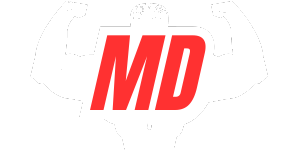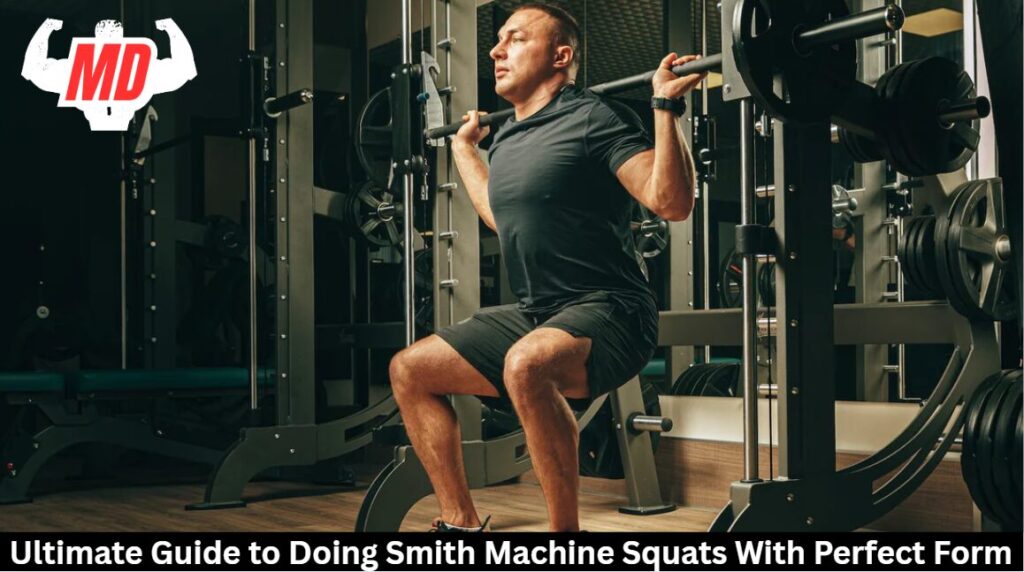To do Smith machine squats correctly, put your feet a little bit in front of the bar and point your toes out. Put the bar across your upper traps, let it go, and lower yourself until your thighs are parallel to the floor. Keep your chest up and your core tight. To stand up, push through your heels and keep your knees from locking at the top.
This controlled setting lets you practice the right technique before adding more weight to make your muscles work harder.
The Mechanics and Benefits of Smith Machine Squats
Smith machine squats have some unique mechanical advantages that you shouldn’t ignore, even though traditional free-weight squats are still the best way to build your lower body. The fixed vertical path takes away the need for balance, so you can concentrate completely on getting the right form and activating your muscles.
Because Smith machines have improved safety features that allow you to exit quickly if necessary, performing squats on one will make you safer. Additionally, the guided motion teaches novices the proper way to perform squats, particularly when they are still learning how to move. Because the machine stabilizes the weight for you, you can lift larger loads more safely and concentrate on particular muscle groups more successfully.
For recovering individuals or dealing with limited mobility, the Smith machine offers a controlled setting to build strength while keeping proper body alignment.
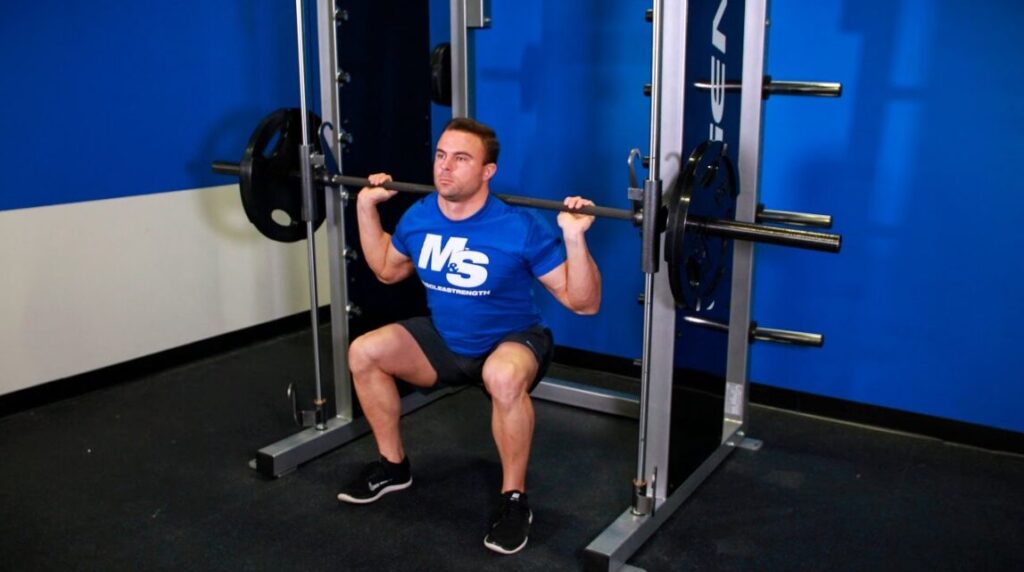
Setting Up Your Body Position for Optimal Results
Proper body positioning forms the foundation of effective Smith machine squats, building upon the mechanical advantages we just explored. Start by adjusting the bar height to align with your upper trapezius or slightly below your neck, ensuring the fixed bar path complements your anatomy.
Position your feet a bit wider than hip-width apart, with your toes angled outward about 15 to 30 degrees. Position your feet slightly forward of the bar. This position accommodates the fixed vertical bar path while maintaining proper joint alignment throughout the movement.
Before unracking, engage your core by drawing your navel toward your spine. It stabilizes your torso during the exercise. Complete your machine setup by checking that safety catches are set at an appropriate height to prevent injury if you need to bail during a repetition.
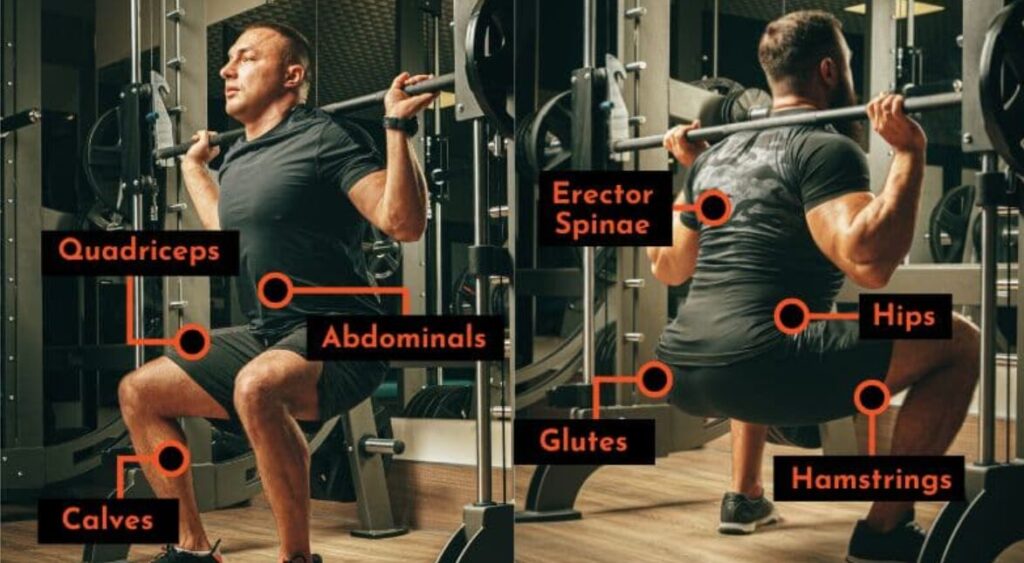
Step-by-Step Technique Guide for Perfect Execution
Setting up the bar and taking it off the rack correctly are the first two steps to doing a perfect Smith machine squat. First, put the bar at shoulder height and hold it with your hands a little wider than shoulder-width. Next, to do this lower body workout, take the bar off the rack and step back while keeping your feet shoulder-width apart.
Third, descend with controlled movement by bending your knees and hips simultaneously until your thighs are parallel to the floor. Maintain a neutral spine throughout your range of motion to maximize strength training benefits while preventing strain.
Fourth, drive upward through your heels, keeping your chest up and core tight. Finally, lock out at the top without hyperextending your knees. This technique emphasizes injury prevention while ensuring effective muscle engagement during each repetition.
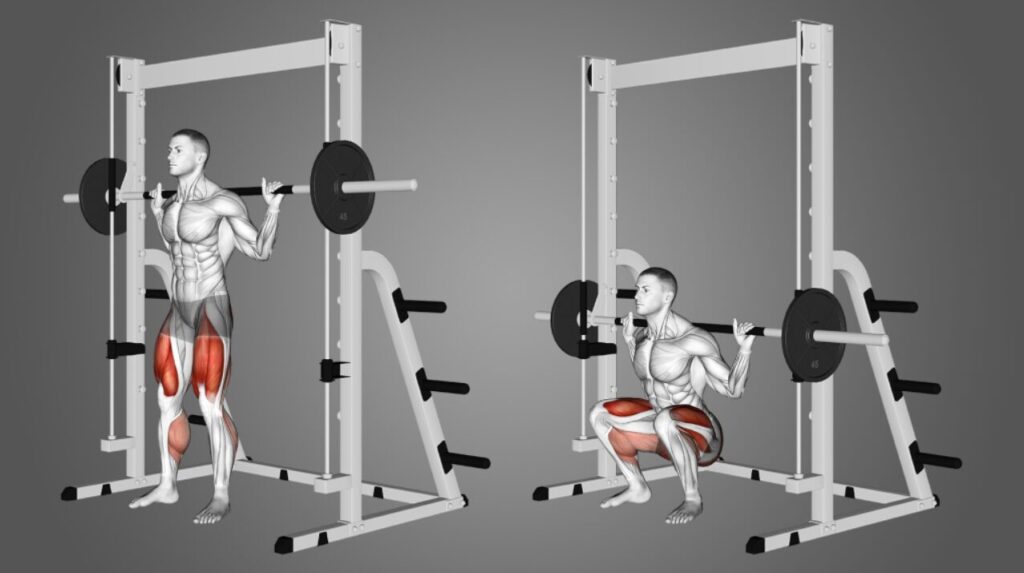
Common Mistakes to Avoid and How to Fix Them
Even though the Smith machine can guide you, a lot of lifters make big mistakes with their form when they do squats on it, which hurts both their results and their safety. Putting your feet too far forward is the most common mistake. It takes tension off your quadriceps and puts too much stress on your knees. Instead, stand with your feet a little bit in front of the bar to keep your body in the right position.
Go down until your thighs are parallel to the floor, and stay stable the whole time. A lot of lifters also don’t use progressive overload, which means they stick with weights that are easy for them and don’t push their muscles. Keep track of your lifts and slowly add more weight.
Lastly, don’t lock your knees at the top. To keep your muscles under constant stress, keep a little tension in your legs.
Programming Smith Machine Squats in Your Training Routine
Three effective ways exist to incorporate Smith machine squats into your weekly routine. First, use them as your primary squat movement on leg days, performing 3-4 sets of 8-12 reps for hypertrophy or 5-6 sets of 3-5 reps for strength.
Second, include them as a secondary exercise after free-weight squats when your stabilizing muscles are fatigued but you still want to target your quads and glutes with heavy loads.
Third, utilize them in superset combinations with exercises like lunges or leg extensions for an intense metabolic stimulus.
For beginners, start with twice-weekly sessions focusing on proper form before adding weight. Advanced lifters can implement periodization by alternating between Smith machine and free-weight squats to prevent plateaus and maintain balanced development.
Frequently Asked Questions
Can Smith Machine Squats Help Rehabilitate Knee Injuries?
Yes, they can help rehabilitate knee injuries due to their controlled motion and reduced strain. You’ll benefit from the guided bar path, which allows you to strengthen muscles around the knee safely and gradually.
How Does Bar Path Angle Affect Muscle Recruitment?
The angled bar path of Smith machines shifts more emphasis to your quads when positioned further forward, while standing back targets your glutes and hamstrings more. You’ll feel different muscle engagement with position changes.
Should I Wear Specific Shoes for Smith Machine Squats?
Yes, wear flat, stable shoes like weightlifting shoes or Converse for Smith machine squats. They’ll provide better stability and force transfer than cushioned running shoes, helping you maintain proper form throughout the movement.
Can I Do Single-Leg Variations on the Smith Machine?
Yes, you can perform single-leg Smith machine squats. They’re excellent for addressing muscle imbalances and increasing unilateral strength. Position your working leg centered under the bar and maintain proper balance throughout the movement.
How Do Smith Machine Squats Compare to Hack Squats?
Smith machine squats offer more flexibility with foot placement and engage core stabilizers, while hack squats provide greater back support and isolation of quads. You’ll feel different knee and hip angles with each variation.
